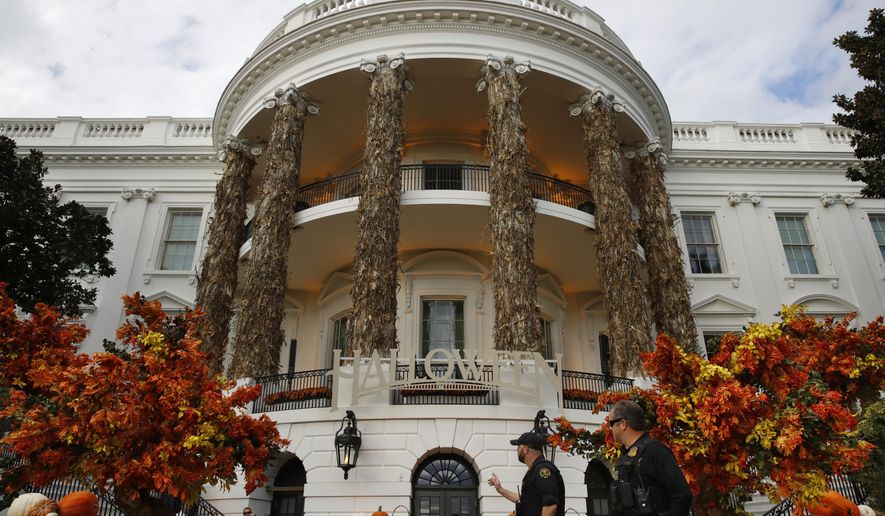OPINION:
The U.S. Secret Service is testing a new facial recognition program at the White House, supposedly simply to identify their own volunteer agents in the public areas in the vicinity of 1600 Pennsylvania Ave.
But come on. There’s not a person alive who believes the Secret Service won’t take peaks at passersby. And this program is a slippery slope that’s leading toward civil rights’ nightmare.
Red-light cameras, move over. The government’s now gunning for your face.
The Department of Homeland Security attempts to assure in its “Privacy Impact Assessment for the Facial Recognition Pilot” report from November that those who don’t want their faces to be captured on camera “may choose to avoid the area.”
But how is that a comfort?
It’s akin to being told by the Transportation Security Administration that those who don’t want naked scans of their bodies being seen by who-knows-who and stored in government-run databases for who-knows-how-long have the choice to not fly.
What an option. Now Secret Service is shoulder-shrugging, in essence, the same?
This is not how free society operates.
Safety needs — whether we’re talking airline safety driver safety or White House safety — do not trump individual rights.
The moment they do is the moment society turns the corner into a police state.
Yes, America needs national security. Yes, the hallowed halls of America’s government, of America’s transportation, of America’s streets and communities need to be safe and secure from threats, both foreign and domestic. But the fine line separating national security from natural rights of individuals has been steadily blurring and even blackening, particularly since Sept. 11.
When you cut through the bureaucratic bull, what’s going to take place with this new facial recognition program is that Secret Service is going to be conducting, wittingly or not, purposely or not, surveillance on members of the American society absent any warrant, absent any probable cause, absent any type of specific suspicions that would normally meet the Fourth Amendment criteria for court-approved data-tracking.
Homeland Security puts it this way, in its Privacy Impact Assessment, or PIA, from November: “U.S. Secret Service will operate a Facial Recognition Pilot [FRP] at the White House Complex in order to biometrically confirm the identity of volunteer USSS employees in public spaces around the complex. … One of the areas selected for the FRP is in an open setting, where individuals are free to approach from any angle.”
DHS may stipulate that during this pilot, which runs through August of 2019, “USSS is interested in identifying only volunteer employees.” Yet DHS also admits the camera eyes will wander; the data on citizens will be collected and sifted eventually assessed, on at least a weekly basis.
At the end of the day, one of the most secretive law enforcement agencies in the nation will have at their disposal facial scans taken from unsuspecting citizens — from unsuspecting, presumed innocent citizens.
“Individual members of the public may be unaware that their facial images are being captured and used by a facial recognition technology,” DHS wrote, in recognition of one privacy risk from the program. “This risk is partially mitigated. General notice is provided to the public by this PIA.”
Well, putting out a PIA is hardly mitigating the risks here. But the bigger question looms: What next?
What comes after Secret Service agents run this facial recognition program and determine — and you know they will — a usefulness, one that can really provide for the protection of the American people?
It won’t be long before facial scanning technology weaves its way into other government buildings, into local police departments, into even the private sector and Big Business with all its Big Money vulnerabilities.
It won’t be long before we the citizens become accustomed to facial scanning in the public sector — as accustomed as we’ve become to cameras mounted atop red lights.
The real risk here is the loss of individual privacies and constitutional protections. Presumption of innocence is a foundational right in free societies. It keeps the police and courts in check, ensures the individual can walk about freely — and not be swept away during the night, never to be heard from again — and maintains the proper roles of government and people, with the former subservient to the latter, the first providing humble service to the second.
The government can tisk-tisk all it wants. But the fact is: Facial scanning, no matter how it’s packaged as a national security need, is intrusive and sets up a system of presumed guilt.
That’s chilling.
That’s technology that should only be rolled into the most top-secret of places, for the most sensitive of causes, for the most military-minded or national defensive of needs — and never, ever onto the streets of America where innocent pedestrians pass and innocent children play.
• Cheryl Chumley can be reached at cchumley@washingtontimes.com or on Twitter, @ckchumley.




Please read our comment policy before commenting.